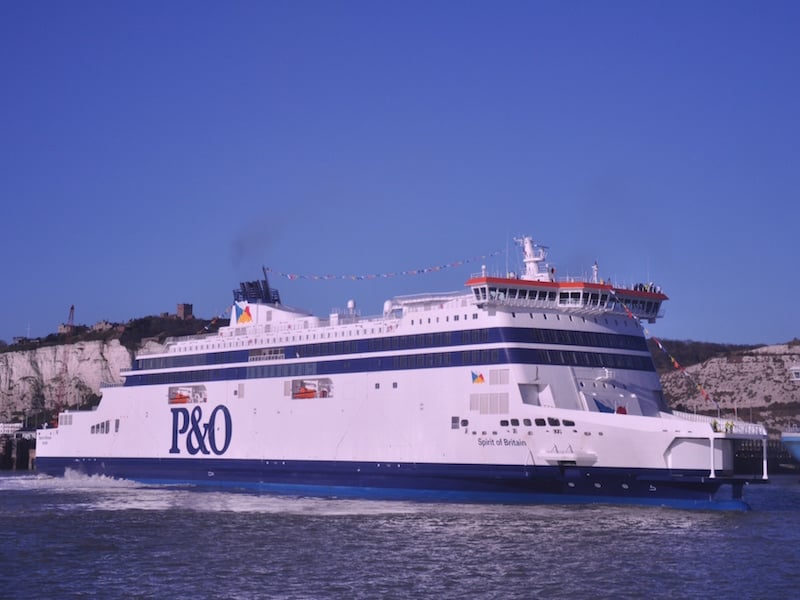The Top 21 Crises Of 2022 (Part 3 Of 3)

[ad_1]
Crisis Review: Read Part One and Part Two
15. DWS raid uncovers the perils of greenwashing
2022 was not a great year for the ESG movement, assailed as it was by both sides of the political divide. In the US, rightwing politicians have derided the notion that environmental, social and governance (ESG) factors should influence investing strategies as ‘woke capitalism’, and enacted laws to support their pushback.
In Europe, meanwhile, the EU has stepped up action to ensure that ESG practices are not just another dose of unregulated greenwashing, reaping investment rewards for fancy reports that offer platitudes without progress. This may well mark a long-overdue reckoning for ESG claims, amid considerable criticism of an industry that is expected to attract $34m in investment by 2026.
And German prosecutors demonstrated that the EU’s policymaking can hardly be viewed as toothless when it raided Deutsche Bank asset management arm DWS for misstating ESG criteria in its investment portfolio. DWS chief executive Asoka Woehrmann resigned in the wake of allegations by former chief sustainability officer Desiree Fixler that the firm misled investors about green investments in its €994bn assets under management.
Indeed, DWS’ experience has helped to hasten calls for greater ESG regulation — with several countries bringing in rules that regulate the reporting and auditing of ESG policies and claims. “The amount of regulation that’s coming in will force companies to flip their attitudes from showcasing to bringing legally mandated transparency,” said Blurred partner and ESG expert Jeremy Cohen. “Investors are fed up with the lack of transparency right now.”
The financial industry, adds Cohen, needs to shoulder a considerable amount of blame for this. “You can’t say we are an investment fund focused on saving the planet and at the same time hold 10% in fossil fuels,” he states. “Some of those big ESG champions in the financial industry are demonstrated to be hypocrites.”
US regulators have also launched an investigation into DWS last year, alongside a separate probe by Germany’s financial regulator BaFin. DWS has denied wrongdoing but changed its ESG criteria and admitted that it had €115bn of ESG assets, 75% less than the €459bn of ‘ESG integrated’ assets reported a year earlier.
Accordingly, the DWS crisis demonstrates the critical risks for companies that tout their ESG credentials without enough evidence, often supported by a public relations industry that has prospered from increased business in the area.
“People will be far more cautious about the claims they’re making and their ability to substantiate them,” said Andrew Steel, global head of Sustainable Fitch. “You must be able to justify with detail the claims that you are making.”
According to SenateSHJ’s Crisis Value Erosion Index, DWS’ share price dropped by more than 5%, taking 21 days to recover. But the broader concern may be how it impacts the entire ESG sector, particularly as increasing regulation and rules are enacted. Many observers are wondering which fund manager will be under the spotlight next.
BNP Paribas, for example, has joined DWS in reclassifying ESG funds, downgrading billions of assets from the EU’s top ESG designation, alongside similar moves from Amundi, BlackRock and Pimco.
“We need to have much clearer guidance from the authorities to make sure we aren’t misled and we aren’t being sold greenwashed investment products,” Guillaume Prache, managing director of Better Finance, said in an interview at the time.
Morningstar estimates that hundreds of funds will need to be reclassified under the EU’s nascent regulatory regime. DWS, meanwhile, endured six months of client outflows before finally mounting a recovery in the third quarter of the year, under new CEO Stefan Hoops. Its experience should come as a clear warning to others about ESG claims. — Arun Sudhaman
16. Anglo-American mining town gets ‘buried in sludge’
The historical relationship between the mining industry and the African continent is fraught, to say the least. So any crisis involving a company that has extracted resources in the region is likely to spur outrage, even — or maybe even especially — if it involves activity that dates back to a different era in history.
That was the challenge facing Anglo-American DeBeers in September of last year, when a dam collapsed at a diamond mine in Jagersfontein, South Africa, releasing a watery mixture of mining waste known as tailings, which spread across the local landscape, destroying homes, pouring into rivers and spoiling grazing land, killing one person and displacing more than 200 residents.
De Beers was quick to point out that it had no current ownership or responsibility for the mine, and that it sold the operation along with its associated liabilities in 2010. It also made it clear that it was willing to provide technical assistance and support to the government if requested.
But Mandy Kojetin, a senior client lead for South African PR firm Atmosphere points out: “Overall, this crisis response illustrates the challenges of crisis communication and management, especially in cases where the ownership and responsibility of the incident is not clear. It’s important to be transparent and honest, while working closely with the authorities and other relevant parties to identify the responsible parties and take steps to address the incident and prevent similar ones in the future.”
She says that climate change-related litigation is likely to rise exponentially in the coming years, adding, “Managing and mitigating the reputation fall-out and the increased focus on the role of governments, businesses, and directors in their personal capacity to responsibly manage sustainability matters from the past, present and into the future is on the rise for corporate reputation experts.”
Keri-Ann Stanton, PR strategist at KAmuses Consultancy, points to a headline in The New York Times coverage of the story: “The world got diamonds. A mining town got buried in sludge,” and adds: “And the victims? A tale as old as time: the poorest of the poor, a community who sounded warning bells that no-one wanted to hear, including government oversight, officials that failed the people they serve.
“The lessons? A country in crisis is ripe for corporate pickings. A country in crisis, despite its strong judicial system and groundbreaking constitution, is still at the mercy of the ministers and their agendas. And for the crisis and communications practitioners, on the one side of the fence they are smiling because there really is very little work to do besides issuing statements. On the other side: we have to get more and more strategic, a photo can tell a thousand stories yes, but how do we get the laws changed, the policies rewritten, and how do we cut through the fatigue?”
SenateSHJ’s Crisis Value Erosion Index shows that Anglo-American lost 12.8% of its market value as a result of this crisis (which has since been recovered) but the story indicates a reality: disposing of an old business does not mean an end to a company’s responsibility to individuals impacted after the sale is completed. — Paul Holmes
17. P&O Ferries gets into hot water
If you asked generative AI tool ChatGPT to come up with a nightmare crisis communications scenario, it might well tell you the toe-curling story of P&O Ferries’ unceremonial sacking of 786 seafaring crew on 17 March last year.
The axing of every job across its entire fleet, with no notice, came the day after the British ferry company had suspended all sailings. The operator told crew to return to port and await a “major announcement,” where they were told by video message that P&O “vessels will be primarily crewed by a third party crew provider… Your final day of employment is today.”
As security staff prepared to remove crew from ships in Dover and Belfast — after unions instructed crew not to leave their vessels — coaches carrying replacement agency workers were already standing by. In response to this jaw-dropping action, the RMT union said it was a “scandalous betrayal” and was seeking legal action over “one of the most shameful acts in the history of British industrial relations”.
The unfolding of this chaotic episode bore all the hallmarks of a classic reputational crisis: ambiguous social media communication, fueling speculation the company was going under; a deeply unempathetic, pre-recorded and widely shared video telling hundreds of crew they were being fired immediately; many team members being forcibly removed by people in balaclavas, to be replaced by crew paid well below the UK minimum wage; a painful Select Committee appearance in which CEO, Peter Hebbelthwaite, admitted the company had knowingly broken the law; and finally government ministers turning P&O Ferries into a poster child for poor corporate behaviour.
Crisis communications consultant Rod Cartwright says: “You know your reputation is in trouble when a company sharing your name – P&O Cruises – runs an active campaign reminding people they’re not you.”
Would a publicly-listed company have followed P&O Ferries’ chosen path, even if doing so might benefit shareholders’ interests by seeking to turn around a loss-making business? Maybe not. But the company is no longer publicly owned: since 2006, it has been a subsidiary of Dubai Ports World, owned by the Government of Dubai and seen to be focused mainly on its ports business.
Cartwright says: “That’s not to say that sovereign ownership per se accounted for P&O Ferries’ deeply ill-advised operational and reputational saga – described in an analysis by Stuart Bruce as ‘not a PR failure, but a failure of humanity’. However, if ever reputational considerations and the likely hit on passenger numbers were going to take a backseat to a holding group’s overall agenda – including a focus on updating long-term industrial relations agreements which insiders suggest sat behind the decision-making – this was it.
“Does this explain or excuse P&O Ferries’ lamentable corporate behaviour and woeful communication? Certainly not. But it does remind us that in seeking to analyse and learn from PR crises, we cannot entirely delink reputational considerations from underlying commercial realpolitik.” – Maja Pawinska Sims
18. BharatPe’s leadership crisis
Founded in 2018, BharatPe has rapidly become the poster child for India’s fintech boom, targeting the country’s small business sector, raising more than $600m and reaching a valuation of almost $3bn.
But 2022 soon became the fledgling firm’s annus horribilis once an audio clip surfaced of co-founder and CEO Ashneer Grover abusing an employee of Kotak Mahindra Bank. Grover was placed on voluntary leave, before BharatPe sensationally removed him from all positions, accusing his family of extensively misappropriating the company’s funds.
Grover resigned, claiming that he was being “vilified and treated in the most disgraceful manner.” BharatPe has since filed a civil lawsuit against Grover, his wife and other family members, alleging that they funnelled company money to non-existent vendors and also used it to pay for personal expenses like air travel and rent.
Grover also appeared on Shark Tank India as the crisis escalated, attracting even more public attention for his harsh comments towards contestants. And he has continued to hit back in public, most notably against BharatPe investor Sequoia India.
“Public relations is 90% behaviour and 10% communication,” says Promise Foundation CEO Amith Prabhu. “Many business leaders get this but most don’t. The founder of Bharat Pe, Ashneer Grover certainly thinks otherwise. His conduct at the firm and his acrimonious exit point out to a behavioral problem that is seen often among maverick entrepreneurs.”
“There have been several questions raised internally by the board and others in the leadership about the ethics or the lack of it which has had a bearing on the organisation’s reputation that will take a long while to evolve,” added Prabhu. “The lesson for leaders across the board is that one’s value system is critical for the success of the company with very few exceptions to the rule.” — AS
19. Zilingo implodes
The second Sequoia-backed startup to make this list, Zilingo’s troubles carry echoes of the founder-based failings that caused such trouble for BharatPe earlier in this list. As one of the most celebrated startups to emerge from Singapore, fashion e-commerce platform Zilingo was valued at more than $800m, but is now set to enter liquidation following a months-long crisis that began when a whistleblower complaint alleged financial wrongdoing under high-profile CEO Ankiti Bose.
Bose was eventually dismissed in May 2022, but has continued to claim she was wrongfully terminated, while levelling charges of harassment and abuse at Zilingo. The clash played out in numerous media outlets, ensnaring several players including Zilingo communications director Naushaba Salahuddin, who quit the company after being suspended.
Zilingo’s CFO and COO also departed, as the company entered a downward spiral that would ultimately prove terminal. Along the way, Boomlive raised suspicions that Sequoia was the target of a paid Twitter campaign using the hashtags #SexistSequoia and #SequoiaLeakedTapes — focusing more attention on the Zilingo situation.
The crisis reflects the lack of governance that often plagues startups, particularly when high-profile entrepreneurs are afforded considerable latitude by their investors. In Zilingo’s case, the initial whistleblower complaint was compounded by accounting probes that revealed mysterious payments running into the millions of dollars.
“What sank Zilingo ultimately?” asks Andy Mukherjee in Bloomberg. “Like so many startups that haven’t gone anywhere, it was a mix of the pandemic, lax financial controls, unbridled expansion running into an altered financing landscape, and an imperfect business plan presided over by a dynamic but flawed founder.”
“The lesson here isn’t about the downfall of the company,” writes Kalani Scarrott in Allocators Asia. “It’s about the complete failure of venture investors and how often this keeps happening.”
In particular, Zilingo veered from one strategy to another as it pursued sales, moving from B2C to B2B, loans to customers, and a short-lived US expansion. But at the heart of the breakdown, says Bloomberg, is the relationship between Bose and Sequoia India head Shailendra Singh. “Allies for years, they fell out as financial pressures mounted.”
“Zilingo’s turmoil highlights an apparent lax internal corporate governance culture that’s not uncommon in the startup industry,” reported Bloomberg. “For two years, the company failed to file annual financial statements, a basic requirement for all businesses of its size in Singapore.”
Given Zilingo’s subsequent implosion, lax financial controls should have raised significant red flags. Much of the coverage also depicted an unforgiving workplace environment under Bose’s leadership. These trends will not surprise anyone who is familiar with similar startup crises at, for example, Theranos and WeWork.
“Theranos, WeWork, and Zenefits are all perfect examples where you have a charismatic yet young founder with a board asleep at the wheel,” writes Scott. “The CEOs deserve to be flamed. But investors also enable them.”
Scott also points to clear warning signs for investors, who chose to ignore them and keep ploughing money into Zilingo. Bloomberg describes the saga as a wake-up call for the Southeast Asian tech community, from which several unicorns have emerged.
“Whatever happened at Zilingo, there will be a lot more dramas in the next couple of years as the big worldwide recession impedes hot shots from raising money,” said veteran investor Jim Rogers, chairman of Rogers Holdings in Singapore. “I’ve seen this rodeo before.” — AS
20. Balenciaga’s disturbing fashion faux pas
Fashion brands have always loved to be provocative, even outrageous, but Balenciaga took things way past the boundaries of sassy cultural subversion late last year with a bizarre new advertising campaign, with one ad depicting young children holding plush bear bags in S&M-style harnesses, and another that included a page from the Supreme Court’s decision in US v Williams, a case that focused on a child pornography statute.
Kate Hartley, co-founder of crisis simulation leader Polpeo said: “I’m not sure who at Balenciaga thought it was a good idea to drop two ads showing children holding bondage teddy bear bags, but someone obviously did. What amazes me is why no-one thought ‘hang on, we’ve got bears dressed in BDSM gear, and we’ve got children promoting them. What could go wrong here?’”
Arguably worse, though, was the twin ad, featuring actors Nicole Kidman and Isabelle Huppert, that showed a Balenciaga bag resting on a US court document questioning whether child sexual abuse imagery laws restricted free speech.
“The point is, this should never have happened,” says Hartley. “Each issue on its own is bad enough. But when you see the two together, it looks like a pattern. The document could have been a genuine error, but in the context of a campaign showing children holding bondage bears it’s extremely disturbing.
“Balenciaga is known for shock tactics in its advertising. But there are shock tactics that you can justify, and then there’s child safety. There’s no justification to associate sexualised images with children.”
The backlash in the media and on the socials was immediate, and enormous. Balenciaga apologised profusely, took responsibility, removed the bondage bear bags from its website – and then dramatically shifted tactics, launching a $25 million legal suit against the campaign’s production company, North Six, as well as set designer Nicholas Des Jardins, alleging that the defendants engaged in “inexplicable acts and omissions” that were “malevolent or, at the very least, extraordinarily reckless.”
This blame shifting also went down extremely poorly; the case was dropped days later, and brand advocate Kim Kardashian has reportedly declined new campaigns with Balenciaga.
Balenciaga’s creative director, Demna, told the FT in November, before the bear campaign broke, “Sometimes people get offended…there is a reason for those things when we do them. It’s never accidental.” As Hartley says: “In this context, that statement looks worrying.” – MPS
21. MTR derails Hong Kong’s reputation for excellence
Once considered a byword for Hong Kong’s world-class infrastructure and efficiency, the city’s Mass Transit Railway (MTR) has fallen on more difficult times in recent years, undermined by a series of mishaps that have compromised its once-impeccable reputation for safety and reliability.
In December 2022, for example, a train fault resulted in 1,500 commuters being evacuated through a dark tunnel. Just three weeks earliers, two sets of doors fell off a train, leaving passengers to hurriedly exit and suspending services for 15 hours.
Hong Kong lawmakers have responded by castigating the MTR for its shortcomings, but the problems have been in the making for some time. As far back as 2018, for example, the MTR’s “fall from grace” was being examined in the South China Morning Post, turning attention towards substandard work on the city’s costliest rail project.
In the process, the MTR’s value as a symbol of Hong Kong professionalism has been turned on its head, viewed instead by critics as an example of the city’s decline. The railway operator’s crisis response efforts have been sluggish and confusing, often suggesting a 20th century crisis approach to 21st century problems.
Events culminated at the end of 2022 with a government decision to establish an independent monitoring panel to oversee the MTR Corporation (MTRC)’s comprehensive review of its asset management and maintenance regime.
“How an organisation manages its problems can tell you more about its culture, decision making and long-term objectives than any amount of study over years of successful operation,” says Sandpiper director Ed Brewster. “The issues MTR faced gave it the opportunity to reinforce its reputation as an organisation that is transparent about its performance metrics, decisive and focused on the safety and comfort of its millions of passenger journeys daily.
“Unfortunately, there were times when it was seen to have been off the pace in this respect, with the door issue and the derailment facing negative coverage,” continues Brewster. “The Hong Kong government’s decision to set up an independent panel of engineering experts should have been welcomed promptly. And for MTR to recover some of its lost ground it must demonstrate it remains focused on passenger needs, and that it always aims to remedy problems promptly and efficiently.”
Brewster wonders if the MTR’s long-term reputation as one of the world’s best railway operators, had encouraged a sense of complacency.
“We all know when it comes to reputation you can never be complacent, but when the bar has been set so high through decades of consistently strong performance, it’s hard to see how the reputation team could have been better prepared,” he points out. “Should they have rehearsed some of these scenarios? Of course, and they probably had, but being open about a new challenge or performance issue can be challenging for any organisation, but when you are regarded as the best, perhaps this is even more of a challenge.”
“The organisation must think deeply about how it can rebuild trust in their history of engineering and operational excellence,” he adds. “As an organisation you should hold true to the values and culture that delivered your success. For MTR, reiterating its long history of engineering excellence, consistent record of delivery and transparency must be at the centre of their reputational response, while acknowledging people’s concerns about quality, and maintenance of trains and infrastructure.” — AS
Crisis Review: Read Part One and Part Two
[ad_2]
Source link







